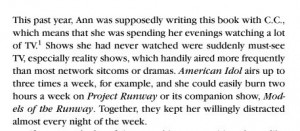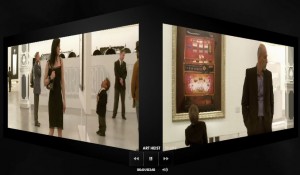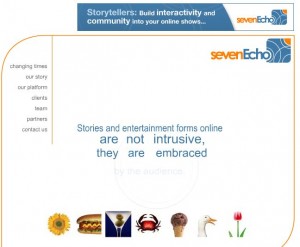Just like OTT is the new viral, transmedia storytelling is the new online video.
“Transmedia storytelling” is not new vernacular, but we predict it will be the buzzword of 2011… pushing the term “currating” into the archives. I became familiar with the term at a 2010 television/web events in NYC, where large media companies defended their crappy dabbling in online video as “transmedia storytelling.” Some online-video content (Office webisodes) are quite clever.
But only about .05 percent of the audience for a television show will ever see the webisodes buried on some archaic network website… so at least the web “add ons” are not typically essential to the plot. Like the secret code on Fringe intro/outros, they’re additive to the experience… and for hardcore fans. In years to come, the interactive content may be more of a main dish than an optional appetizer.
Now you can learn via AdHack what “transmedia storytelling” is all about. The definition, what makes it work (communal, personal, tangible, discoverable, character development). Anyone doing this stuff particularly well?
As on-demand web video becomes mainstream, large television shows will increasingly win audiences to “online video” “lagniappes” that rise above the allotted 23-minutes of a 30-minute show. More importantly, they’ll be vehicles to provide engagement with fanatic fans (oh, and provide additive direct ad revenue to a medium that could use some vitamins).
Content producers should be thinking of this content the way retailers think about the high-end or high-volume offerings that are less about incremental revenue… and more about growing the baseline. For instance if you’re Starbucks, you add the TRENTA not to sell a load of them. If you’re a white goods manufacture, you add a pricey “top of the line” product not to sell more of them. The introduction of these items grow your “baseline” or “middle of the road” offerings in indirect ways that are difficult for our executive brain to understand. It’s the dino-brain, folks. It’s all about the limbic brain. It drives most of our behaviors, and is the reason an emotional appeal works in marketing and entertainment… more on that later.
The tricky balance here? The producers of network television can’t well justify investing in this content until an audience exists (and thus a financial marketplace develops). But viewers won’t be attracted to this storytelling extension until it’s more interesting than a silly “Black Ops” boat-racing game for Burn Notice. So it’s a catch 22 that will take years to escape. But we’ll get there.




